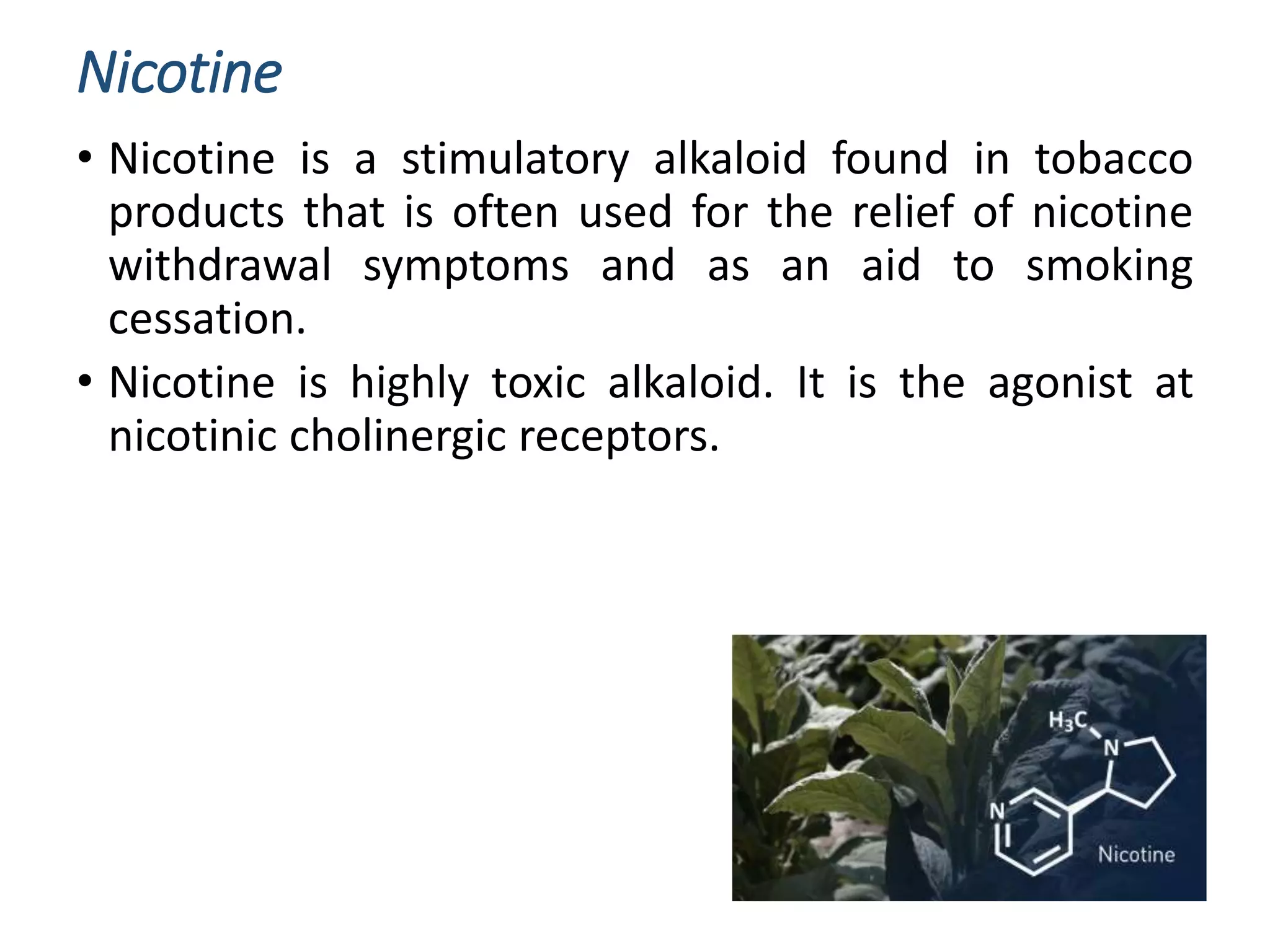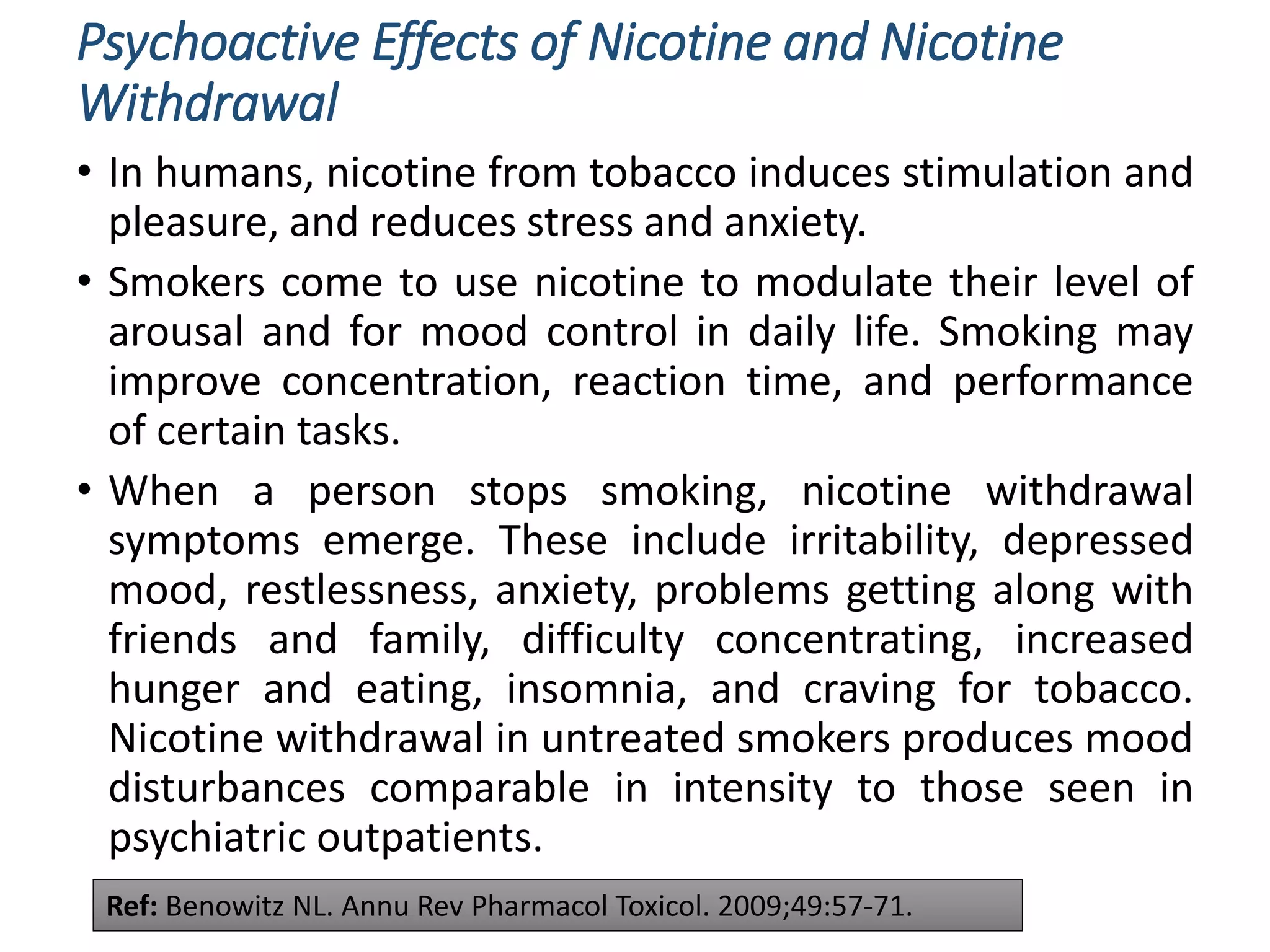Nicotine is a highly addictive stimulant found in tobacco. It acts on nicotinic acetylcholine receptors in the brain, releasing dopamine and causing dependence. Long term nicotine use can lead to serious health issues like cancer, cardiovascular disease, and addiction. Treatment involves nicotine replacement therapies, medications like varenicline and bupropion, and behavioral therapies to manage withdrawal symptoms and cravings. Managing nicotine dependence requires a combination of pharmacological and psychological approaches.



















